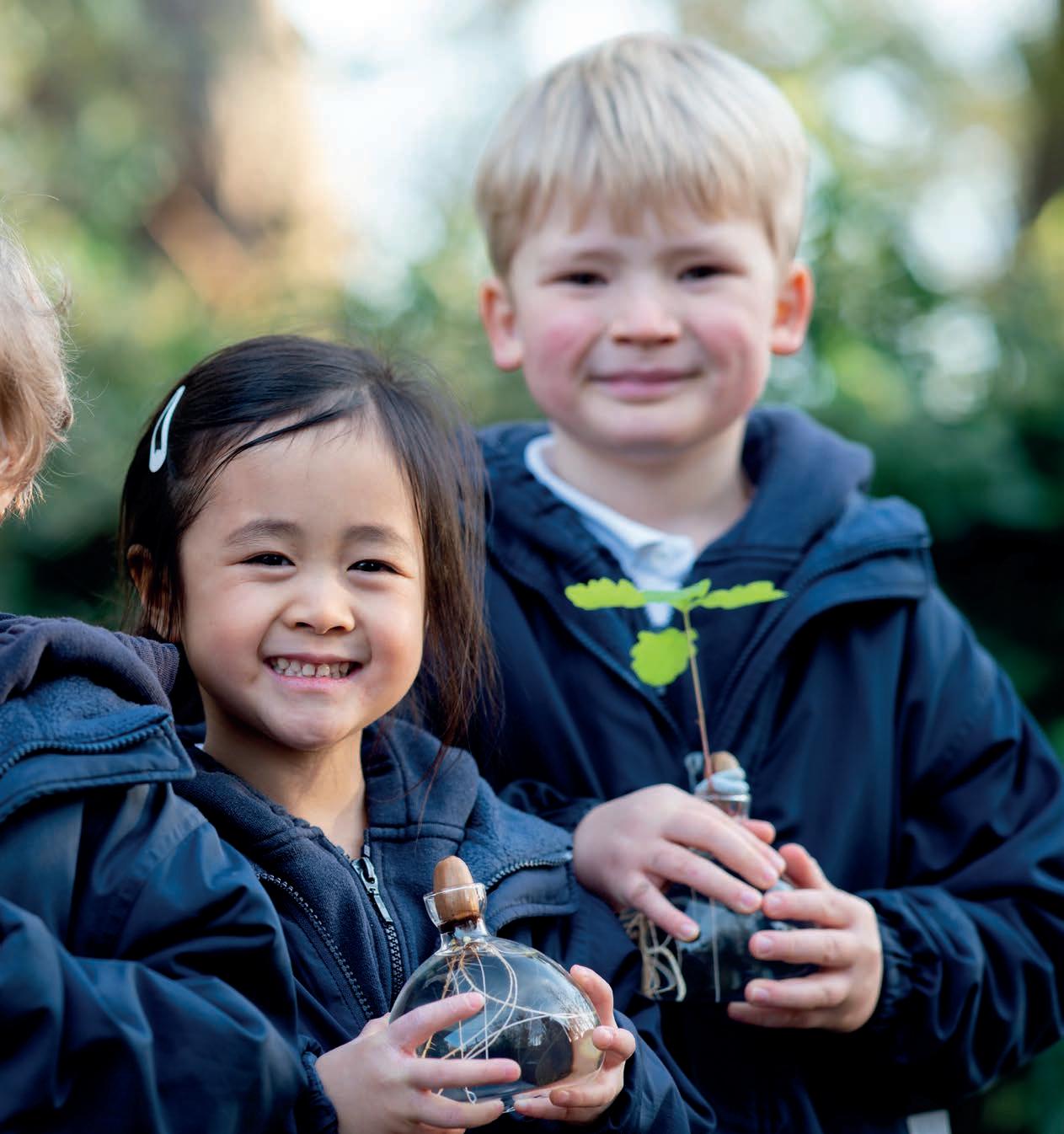
3 minute read
MIGHTY OAKS
A parent at Knightsbridge School explains the inspiration behind a mighty oak forest being planted in Scotland and made up of acorns grown and nurtured by school pupils
HARRY SCRYMGEOUR
As for many of us, the Covid pandemic and the various lockdowns gave me a chance to slow down and reflect, and I have been lucky enough to do much of this surrounded by trees. After my mother died, in the spring of 2019, I started to get involved with the running of a farm in Scotland. I spent much of my childhood on this farm, but it wasn’t until successive lockdowns – finding myself walking around this collection of fields and woodlands, marvelling at the unfurling of spring in front of me – that I began to truly fall in love with it.
I realised how little I knew about agriculture and forestry. I could do the basics but couldn’t really tell many di erent tree species apart. I found a useful app and began educating myself and I can now proudly distinguish an English Oak (Quercus robur) from our more native Scottish variety (petraea). In the second half of the 20th century, most commercial forestry in the UK focused on fast growing non-native softwoods like Sitka, Norway spruce or Douglas fir. In 2020, we embarked on a new forestry plan focusing on planting native species, particularly broadleaf or hardwood trees. We also aim to turn an extra 100 acres of farmland into forest, which will mean planting some 150,000 trees over the coming years. This year, we will plant 60,000 saplings, sourced mainly from local tree nurseries.
The idea for a Knightsbridge School forest started when my son joined the school. Like many parents, I feel that connecting children to nature is more important than ever. I see the way my son develops and grows, running in the woods. The first seeds of this idea were planted by Magoo Giles, the Principal at Knightsbridge School (KS). I showed him a picture of an acorn growing in an oak vase. I was planning to donate it to my son’s classroom and Magoo asked me to come back with one for every classroom at the school.
These are very special vases, designed by my friend, Ed Spurr, that allow you to see the early stages of a tree’s growth from germinated acorn to sapling. You not only witness the development of the stem of the tree and its first leaves but also the exploratory root that would otherwise be
obscured below ground. Once the tree has reached a certain size it can be removed from the vase and potted in a planter until it is strong enough to be planted outside.
The idea is simple: KS pupils gather acorns from Hyde Park every year, germinate those acorns in their classrooms and, after a couple of years, those new oak saplings are transported to Scotland and planted, gradually building a KS oak forest over the coming years. By having an acorn growing in each classroom the children can feel connected with the process of germination. They can watch the miracle of life take place right in front of them. This spring we are potting the saplings that have grown already. KS is very keen to involve its partner schools – Ashburnham and Marlborough primary schools – so next autumn our plan is to give every class at these schools an acorn vase so that they, too, can grow their own oak saplings for the KS forest.
Once we have planted the first saplings in a couple of years’ time, we will share a digital mark (GPS location) so the pupils can check on their trees if they want to. Maybe, in 50 years’ time, if a tree has grown in the mind of a pupil, they can travel up to find their towering oak tree and lie in its shade.
Knightsbridge School has become, in a tiny but real way, a nursery for a forest. In just a few years, the trees will be a substantial little woodland. I have no doubt that these oaks, grown amongst the laughter of children at KS and its partner schools, will become the healthiest and strongest trees we plant.










